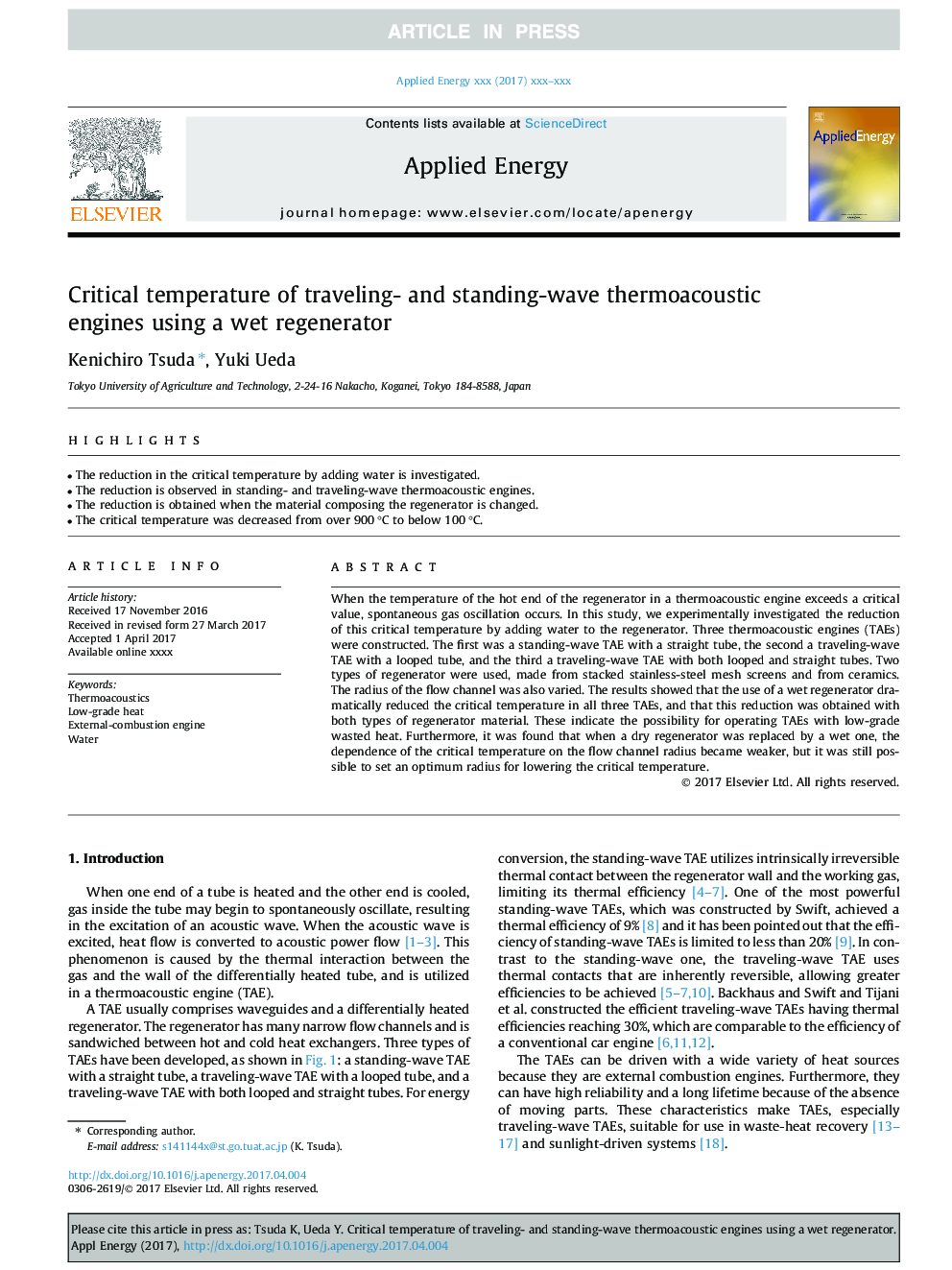| Article ID | Journal | Published Year | Pages | File Type |
|---|---|---|---|---|
| 4916215 | Applied Energy | 2017 | 6 Pages |
Abstract
When the temperature of the hot end of the regenerator in a thermoacoustic engine exceeds a critical value, spontaneous gas oscillation occurs. In this study, we experimentally investigated the reduction of this critical temperature by adding water to the regenerator. Three thermoacoustic engines (TAEs) were constructed. The first was a standing-wave TAE with a straight tube, the second a traveling-wave TAE with a looped tube, and the third a traveling-wave TAE with both looped and straight tubes. Two types of regenerator were used, made from stacked stainless-steel mesh screens and from ceramics. The radius of the flow channel was also varied. The results showed that the use of a wet regenerator dramatically reduced the critical temperature in all three TAEs, and that this reduction was obtained with both types of regenerator material. These indicate the possibility for operating TAEs with low-grade wasted heat. Furthermore, it was found that when a dry regenerator was replaced by a wet one, the dependence of the critical temperature on the flow channel radius became weaker, but it was still possible to set an optimum radius for lowering the critical temperature.
Keywords
Related Topics
Physical Sciences and Engineering
Energy
Energy Engineering and Power Technology
Authors
Kenichiro Tsuda, Yuki Ueda,
